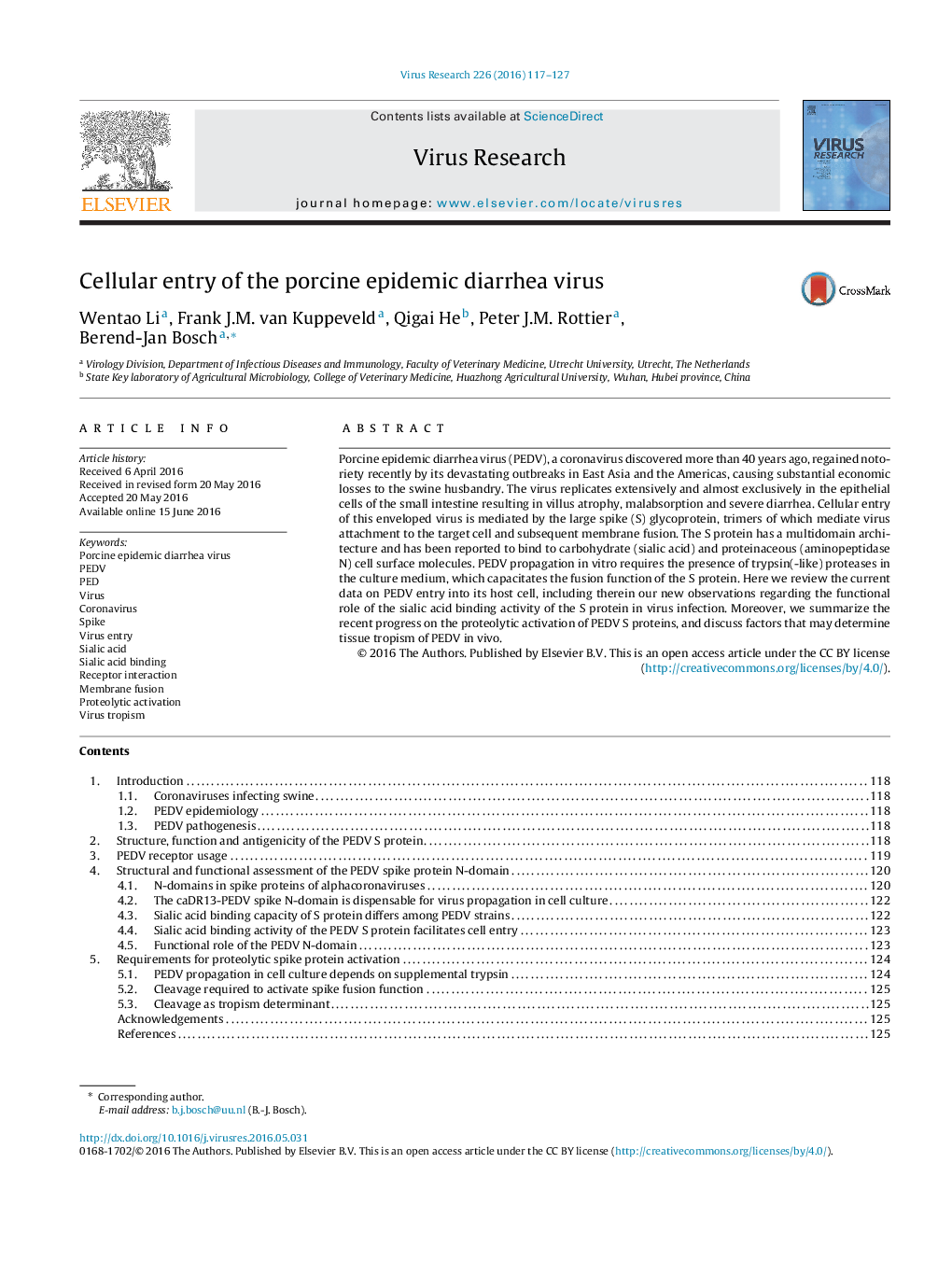| Article ID | Journal | Published Year | Pages | File Type |
|---|---|---|---|---|
| 5675462 | Virus Research | 2016 | 11 Pages |
â¢An overview of the interactions of PEDV and its target cells during the initial stage of infection.â¢A description of the multidomain structure of the spike (S) protein.â¢A summary of observations on aminopeptidase N as the PEDV protein receptor.â¢An overview with new data on the significance of the N-terminal S domain in sialic acid binding.â¢A summary of the requirements for proteolytic activation of the fusion function of the S protein.
Porcine epidemic diarrhea virus (PEDV), a coronavirus discovered more than 40 years ago, regained notoriety recently by its devastating outbreaks in East Asia and the Americas, causing substantial economic losses to the swine husbandry. The virus replicates extensively and almost exclusively in the epithelial cells of the small intestine resulting in villus atrophy, malabsorption and severe diarrhea. Cellular entry of this enveloped virus is mediated by the large spike (S) glycoprotein, trimers of which mediate virus attachment to the target cell and subsequent membrane fusion. The S protein has a multidomain architecture and has been reported to bind to carbohydrate (sialic acid) and proteinaceous (aminopeptidase N) cell surface molecules. PEDV propagation in vitro requires the presence of trypsin(-like) proteases in the culture medium, which capacitates the fusion function of the S protein. Here we review the current data on PEDV entry into its host cell, including therein our new observations regarding the functional role of the sialic acid binding activity of the S protein in virus infection. Moreover, we summarize the recent progress on the proteolytic activation of PEDV S proteins, and discuss factors that may determine tissue tropism of PEDV in vivo.
